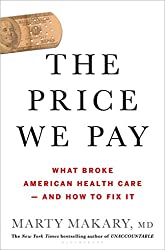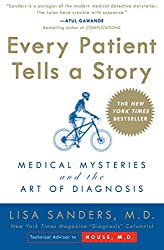
Rating: 8.0/10.
The American healthcare system is rotten to its core: the country spends about twice as much on healthcare as other developed countries, and gets worse outcomes. This book by a surgeon and public health researcher examines what’s wrong with the healthcare system. In short, the free market brings prices down only with transparency and consumers being able to shop around for the best deal, otherwise the market fails and the price becomes “whatever the patient is able to pay” rather than how much it costs to provide the service.
It’s often impossible to know how much a treatment will cost until after it’s been done, and then the hospital is allowed to charge however much it wants. The prices vary from hospital to hospital and from patient to patient, sometimes people are charged up to 20x the fair price (what Medicare pays). They claim that nobody actually pays the full price, but a lot of people do. In the town of Carlsbad, Texas, the hospital routinely sues their low-income patients for the full inflated amount, and their wages are garnished for years to pay the bill.
There are many agents in the system incentivized to sell as much medical care as possible, for their own financial gain, rather than what the patient needs. There are health fairs marketed as early detection of health issues, but really making bogus diagnoses and selling unnecessary treatments. Many doctors prescribe expensive and unnecessary procedures that are profitable, like a balloon sinus thing that doesn’t work and costs $21,000. All sorts of middlemen like for health insurance or pharmaceuticals get kickbacks for selling the most expensive product, while the consumer isn’t aware of the margins and the true cost.
One thing that the book doesn’t really cover is how did America’s healthcare system get so messed up, and other models of healthcare around the world: to what extent do they avoid the problems with American healthcare? I’m curious about how Canada, China, and Europe’s healthcare systems compare, and if they have their own issues. Since there are so many systemic problems, there’s likely no easy solutions.
The author launched one interesting initiative though: using data to track doctors that prescribe certain treatments at an above-reasonable rate. Maybe it’s truly appropriate for 5% of patients, and if the doctor prescribes it for 80% of patients, then something is wrong — but you must use aggregate data and not individual cases to find these doctors. Some suggestions are quite naive though, like just treating patients better. It’s naive because the author only considers the healthcare perspective, and not from an economics perspective of designing the right incentive systems to make it happen.



